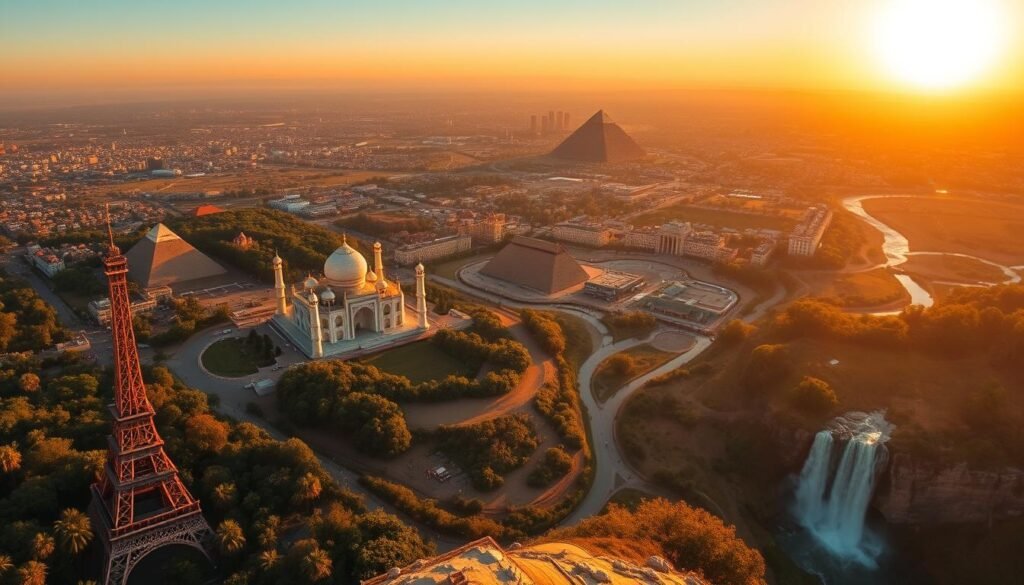Surprising fact: after a decade of travel and visits to over 175 countries, I found that less than 5% of travelers plan with a mix of sunrise strategies and local guides, yet those moves create the richest memories.
I wrote this Ultimate Travel Bucket List from real trips and years of testing tips that turn busy itineraries into calm, lasting experience.
I’ll show how I group destinations by trip style so you match each country and city with your time, budget, and vibe.
Expect quick, practical notes on when to visit, how to avoid crowds, and which tours or hotels act like a home base. I name favorites I would return to and share moves I use now — like early private tours for major wonders and sunrise starts for calm views.
Key Takeaways
- I draw on 10 globe trips and visits to 175+ countries for real advice.
- Organizing destinations by style helps match your time and vibe.
- Practical tips cut crowds and boost delight, from sunrise starts to trusted guides.
- I highlight standout cities, islands, and natural wonders with short guidance.
- You’ll get hotel picks and quick moves that save time and deepen the experience.
Why I built this ultimate travel bucket list today
I assembled this travel bucket list today after field-testing dozens of sites across continents. I wanted a single, useful guide I could hand friends when they ask, “Where should I go next?”
My work spans years on the road and covers the globe, so the selections reflect real-world notes on timing and access. These destinations are grouped by trip style and include practical tips like closures (Taj Mahal on Fridays) and sunrise moves for Angkor.
This list saves you time and helps you skip rookie errors. I draw on on-the-ground experience to flag when a guide speeds things up and when a DIY day works just fine.
Travel should add to life, not planning stress. Use this as a quick, bookmarkable cheat sheet that highlights when culture and seasons matter and which place choices unlock smoother logistics and deeper memories.
| Choice | When to use | Why it helps |
|---|---|---|
| Local guide | Complex sites, tight schedules | Saves hours and avoids lines |
| DIY day | Small towns, beach days | Flexibility and low cost |
| Sunrise start | Popular monuments | Calmer views and softer light |
World wonders I can’t stop recommending
![]()
Some landmarks keep pulling me back, each visit sharpening how I plan the day and where I stand for the photo.
Pyramids of Giza, Egypt
The Great Pyramid (Khufu) sits with Khafre and Menkaure nearby. I often enter the 2nd or 3rd pyramid for shorter lines and better value.
Tip: arrive early and book a short camel ride for that iconic skyline shot. I like staying at Marriott Mena House for views and quick access.
Taj Mahal, India
Built by Shah Jahan for Mumtaz, the Taj has been a UNESCO site since 1983. It closes Fridays, so I always schedule a sunrise tour on another day.
Soft light brings Mughal architecture to life. The Oberoi Amarvilas is my go-to stay when I want an easy morning arrival.
Great Wall of China
The wall stretches 13,000+ miles, but Mutianyu gives calm stretches if you arrive before the crowds. I book an early private tour so I can actually hear the wind on the ramparts.
When I want comfort after a long day on the wall, The Peninsula Beijing makes the logistics simple.
Petra, Jordan
Petra’s rose sandstone unfolds as you walk the Siq toward the Treasury. I always push on to the Monastery — the climb rewards you with sweeping views.
A private day tour from Amman makes timing easy, and the Ritz Carlton Amman is a reliable base.
| Site | Quick tip | Ideal time | Nearby hotel |
|---|---|---|---|
| Pyramids of Giza | Enter 2nd/3rd pyramid; short camel ride | Early morning | Marriott Mena House |
| Taj Mahal | Sunrise tour; closed Fridays | Sunrise | The Oberoi Amarvilas Agra |
| Great Wall (Mutianyu) | Private early tour to avoid buses | Morning | The Peninsula Beijing |
| Petra | Siq to Treasury; hike to Monastery | Full day | Ritz Carlton Amman |
Temple trails in Asia that blew my mind
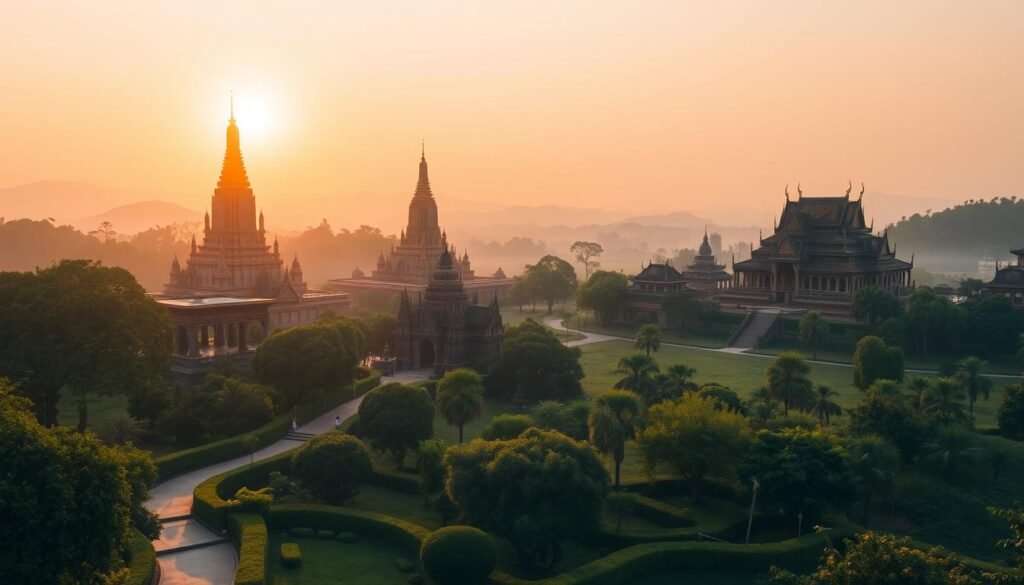
Temple complexes here reward slow mornings. I learned that arriving at dawn changes everything: light, crowds, and how you feel while walking old corridors.
Angkor Wat, Cambodia
I go for sunrise every day I stay in Siem Reap—the reflections and quiet time transform the visit. Tickets cover the park, so I use early entry and a small-group tour to move through the vast grounds without losing time.
Hotel tip: Raffles Grand Hotel d’Angkor makes early drop-offs simple and restful.
Borobudur & Prambanan, Indonesia
Borobudur is a UNESCO site that truly sings at pre-dawn. I catch a ~4:30am departure and then pair it with Prambanan later that same day for a tight, history-rich loop across Java the island.
That rhythm—pre-dawn glow then shade and coffee—keeps the pace humane and the memories sharp.
Kyoto, Japan
Kyoto moves slower. Temples here favor seasonal change: maples, blossoms, and quiet gardens set the tone. I plan extra time for sitting spots and respectful rituals so I can feel the local culture rather than rush a checklist.
- I watch dress and behavior—local respect opens quieter corners.
- I check closures and museum passes ahead to save walking time.
- These temples and rituals are best enjoyed unrushed; build margin into each tour.
Each site links history and culture differently, so I leave space for small discoveries. These are the kind of places on any traveler’s map that teach patience and wonder across the world.
Natural wonders and national parks worth the trip
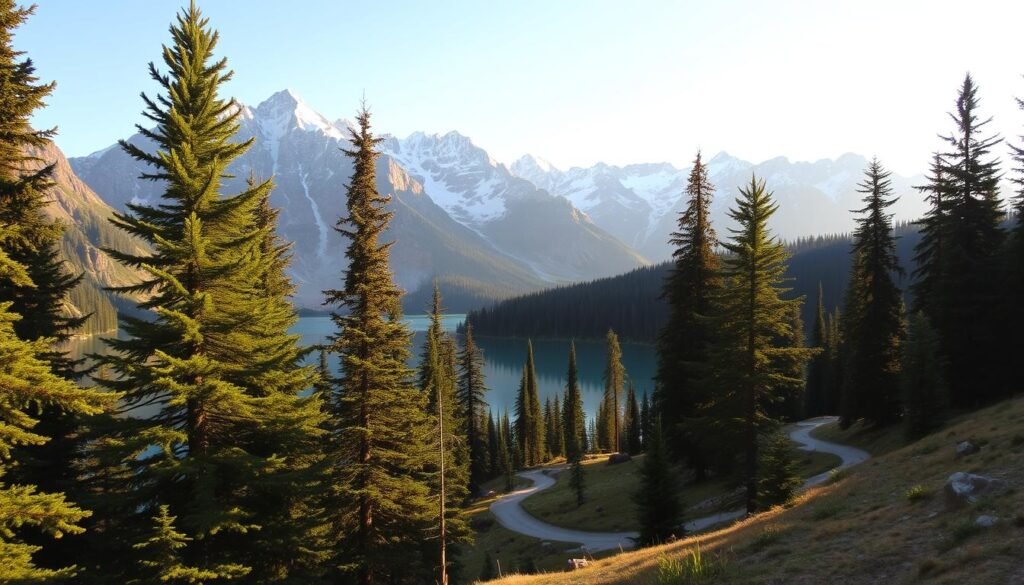
For me, natural drama comes from light, weather windows, and a little local knowledge. I plan each national park day around sunrise or late afternoon for calmer boardwalks and better photos.
Great Barrier Reef — Cairns & Whitsundays
I split time between a reef cruise and a scenic flight over Heart Reef to grasp scale and color. I often base myself near Hayman Island at the Intercontinental Hayman Island Resort for fast access and comfort.
Victoria Falls — Zambia / Zimbabwe
I lean toward the Zimbabwe viewpoints for full curtain views, especially in high water (Feb–May). A Zambia day visa makes a cross-border hop simple, and helicopter tours add an aerial wow when weather cooperates.
Plitvice Lakes, Croatia
Sixteen lakes and linked boardwalks reward early or late walks. I avoid the 10am tour-bus rush and stay near the entrance—Hotel Degenija is handy for that rhythm.best-time-to-visit-aruba
Yellowstone & Grand Canyon highlights
At Yellowstone I respect pullouts and ranger advice around geysers and wildlife like bison and wolves. The Grand Canyon changes by light; sunrise rims and river perspectives reset your sense of scale and landscapes.
- Tip: shoulder seasons often increase nature, reduce crowds, and add crisp mornings for better experience.
Islands and beaches for pure paradise vibes
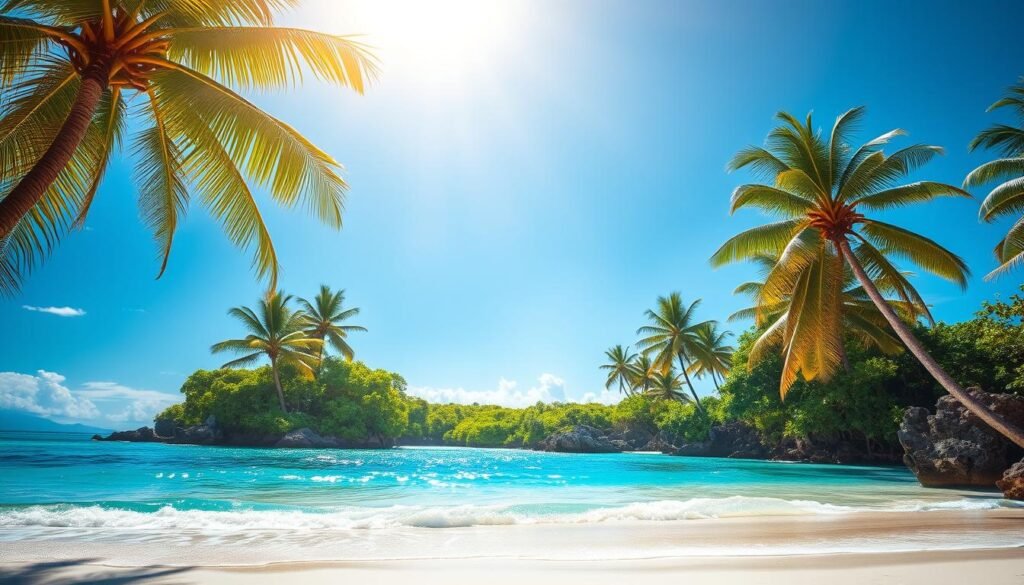
My island picks start with mood — whether I want reef snorkeling or cliffside sunsets. I favor short transfers and long, lazy mornings on sand so the day feels unhurried.best-time-to-visit-cancun
Bora Bora & the Maldives
I pick these for overwater bungalows and glassy waters teeming with reef life. Sunrise swims here often outshine anything later in the day.
Santorini & the Amalfi Coast
White-and-blue villages and cliffside towns set dramatic backdrops. You’ll find black-sand beaches and boat days that feel cinematic and calm.
Bahamas, Florida Keys & Hawaii
For easygoing rhythms I choose islands with friendly resorts and simple island-hopping. In Hawaii I mix volcano hikes, reef time, and turtle encounters for a rounded experience.
- I time boat trips for calm waters and golden-hour views.
- I build in lazy beach mornings after travel days.
- I choose resorts that simplify transfers so I spend more time in the water.
| Destination | Vibe | Quick tip |
|---|---|---|
| Bora Bora / Maldives | Secluded luxury | Book overwater bungalow and a reef snorkel |
| Santorini / Amalfi | Cliffside charm | Plan a boat day and an evening sunset cruise |
| Bahamas / Florida Keys / Hawaii | Laid-back island life | Pick a resort that handles transfers and day trips |
Culture-rich cities that define world travel
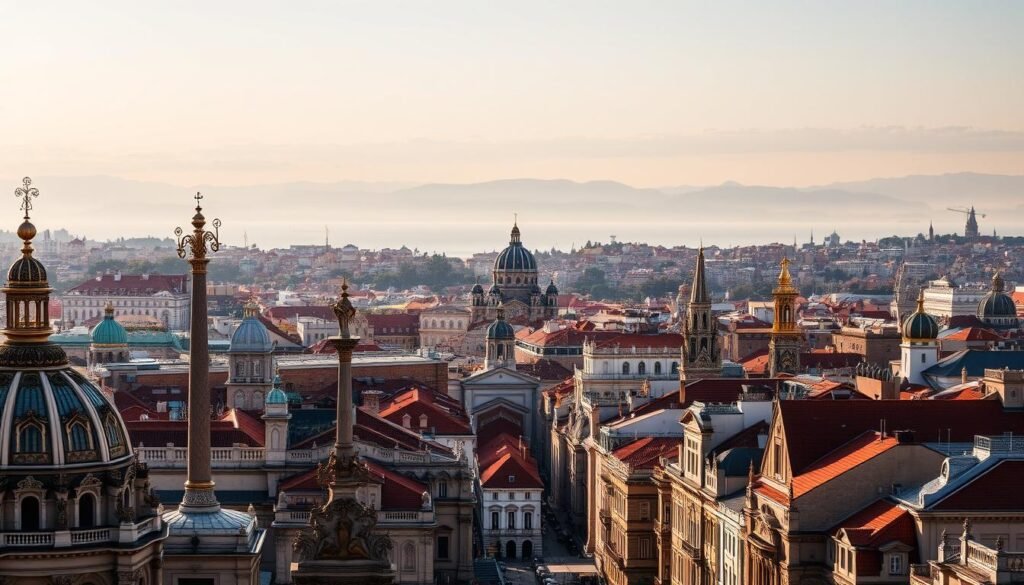
My favorite city days mix a single headline sight with small, local corners that slow the pace and sharpen the memory.
Paris & Rome: art, architecture, and unforgettable food
In Paris I split time between the Eiffel Tower, the Louvre, and slow café hours near Notre Dame. I plan museums for midday and long breaks for espresso and people watching.
Rome folds the Colosseum and Vatican Museums into a rhythm of piazzas and gelato stops. I anchor each day around one major site and one neighborhood alley to keep things calm.
Tokyo & Dubai: neon energy, tradition, and skyline thrills
Tokyo moves fast—Shibuya’s neon and Asakusa’s temples show the city’s range. I balance a temple visit with a market breakfast, then let an evening train carry me to a different mood.
Dubai pairs the Burj Khalifa’s skyline with sleek modern lux. I schedule timed tickets for observation decks and add a quieter district walk to meet local rhythms.
Barcelona & Cape Town: coastal cityscapes with bold design and nature
Barcelona blends Gaudí’s wild lines with beach afternoons and tapas lanes. I use transit cards and timed entries so I can wander without racing the clock.
Cape Town mixes bold design with instant access to nature—tabletop hikes, coastal drives, and vibrant neighborhoods. Food and neighborhoods guide my most memorable city days.
- Quick approach: one iconic site + one neighborhood each day.
- Food-first: morning markets, museum afternoons, slow dinners.
- Tip: watch for late museum nights or timed-viewing tickets to avoid lines and catch twilight views. See a curated list of cultural hubs like these at cities for culture.
Wildlife encounters and nature-first destinations
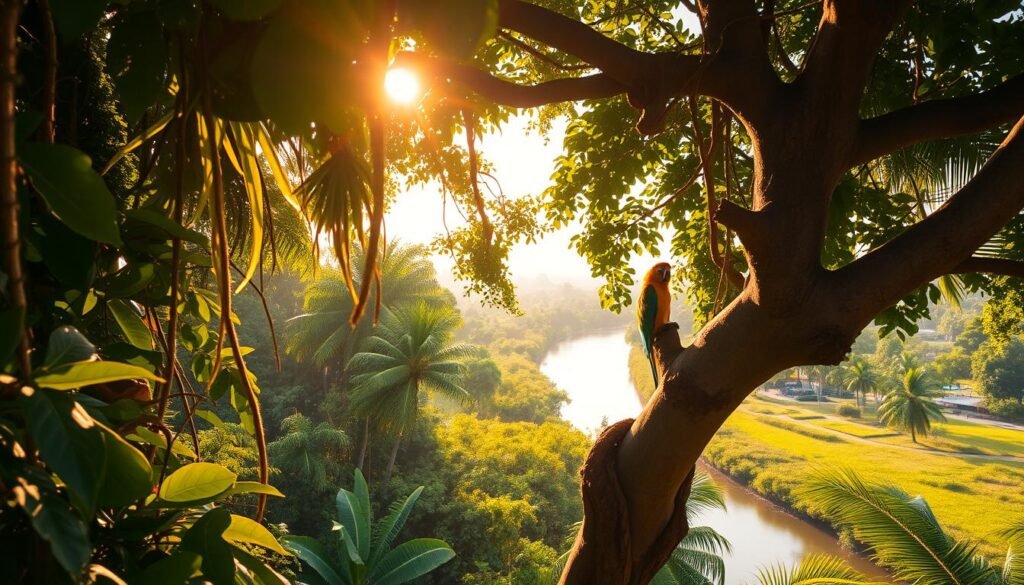
I chase raw wildlife moments where landscapes feel larger than my plans. These trips center on slow mornings, local guides when they add value, and careful timing around weather windows.
Galápagos Islands, Ecuador
About 97% of the archipelago is national park, which shapes how visitors move between islands. I often skip a cruise and island-hop by local speedboats to see tortoises and blue-footed boobies on my own schedule.
Patagonia, Chile & Argentina
Torres del Paine rewards every step with glacier-fed lakes and windswept views. I lean on guided hikes or horseback rides from operators like explora Patagonia for navigation and local insight.
Alaska, USA
Alaska can be a land or sea adventure. I split time between glacier cruising and on-the-ground wildlife days near Anchorage or Juneau, and I chase the aurora when winter allows.
Costa Rica
For rainforest thrills I pick rafting, hot springs, and canopy lines. This country is a master class in nature-forward travel—plan for changing waters and prioritize safety around wildlife.
Trip habits I use:
- I time day tours for calm waters and better light.
- I choose lodgings near trailheads or docks to maximize outside time.
- I use small guided tours when they boost learning and reduce logistics stress.
| Destination | Quick tip | Why it helps |
|---|---|---|
| Galápagos | DIY island-hop by local boat | Flexibility and closer wildlife encounters |
| Patagonia | Book guided hikes or horseback | Safer routes and richer landscape context |
| Alaska | Mix cruise and land days | See glaciers, whales, and northern lights |
| Costa Rica | Layer adventure with rest | Recover between active nature days |
Remote adventures that feel like another planet
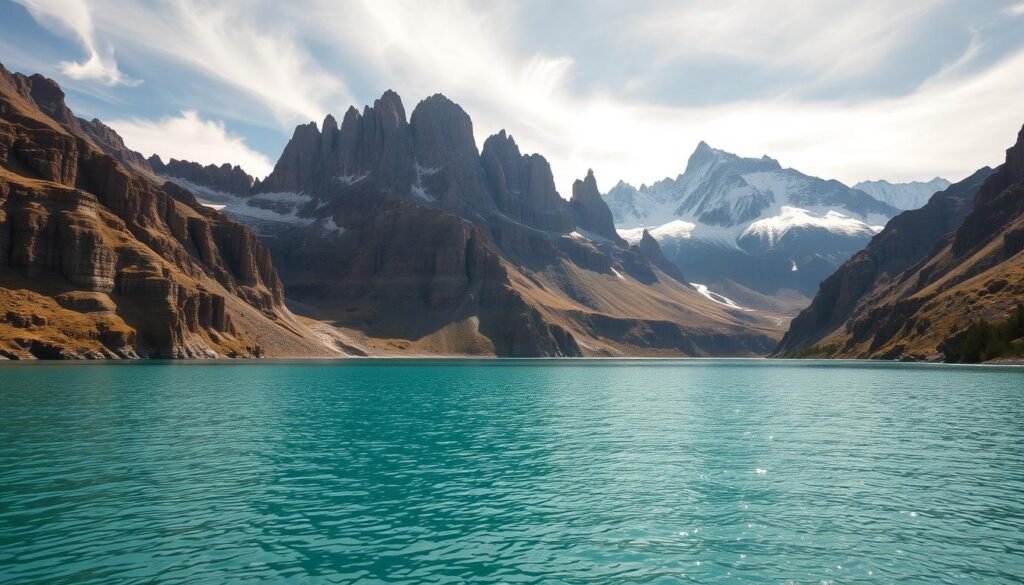
Remote corners often give the clearest sense that you’ve stepped into another planet. I chase those moments where light, texture, and quiet strip travel down to pure experience.
Iceland’s Blue Lagoon and beyond: geothermal wonders and Northern Lights
The Blue Lagoon sits at about 98–102°F, soaking you in mineral-rich waters over black lava fields. I pair that calm with a self-drive or guided Golden Circle loop when roads are clear.
I often stay at the Reykjavik EDITION for a short base and chase winter auroras after dark. Buffer days matter—northern lights need a little luck and flexible timing.
Cappadocia, Turkey: cave stays and sunrise hot air balloons
Cappadocia feels otherworldly at dawn when dozens of balloons lift above fairy chimneys. I like cave hotels with terraces that let the morning unfold in silence.
Book early for balloon slots and give yourself a rest day; weather can ground flights and you’ll want margin for that luck factor.
Ha Long Bay, Vietnam: karst cliffs by junk boat or cruise
Ha Long’s limestone karsts glow at dawn best from an overnight cruise. I’ve sailed on options like the Paradise Elegance and stayed on Cat Ba for extra exploration.
An overnight lets cliffs, calm waters, and sunrise align without the rush of day-boat schedules.
- I pick spots that feel far away yet are reachable with one smart flight or transfer.
- I book tours and transfers in advance; remote options sell out fast in peak season.
- I always build buffer days—balloons and auroras need a little luck to line up.
- Choose one place to slow down; let the landscape do the talking.
For further inspiration on remote locations and how to plan them, I often consult curated lists of truly remote destinations like this remote resource.
The best places to visit in the world, organized by trip style
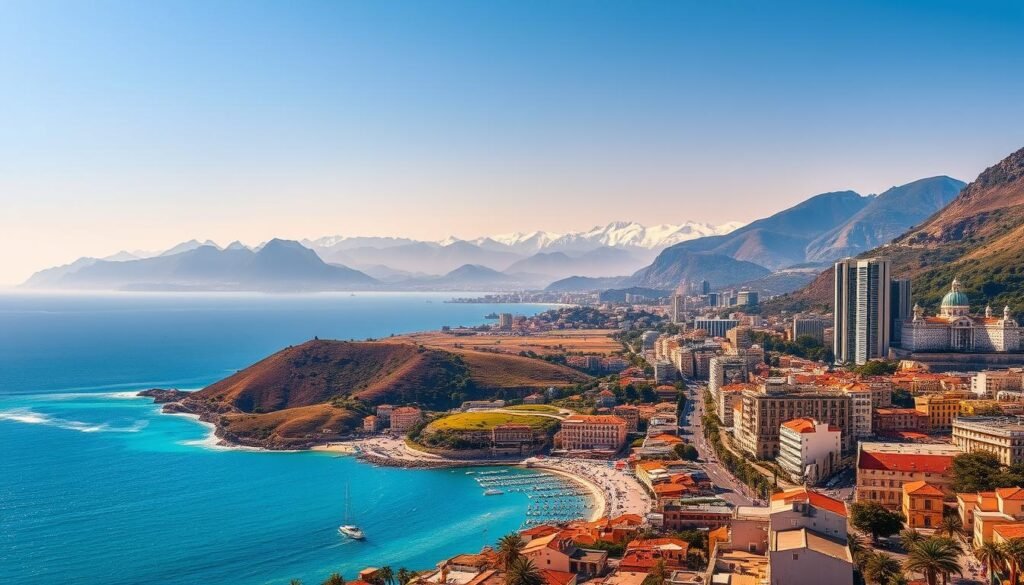
When I plan a trip, I choose a style first—history, beach, city, or wild—and build the rest around that mood.
Iconic landmarks and history lovers
If history calls you, I map quick routes: Taj Mahal, Petra, and the Colosseum. Each day pairs one big site, one great meal, and one local moment that makes the story stick.best-islands-to-visit
Beach retreats and island escapes
For sand-and-snorkel days I favor Bora Bora, the Maldives, Santorini, and the Keys. These beaches reward slow mornings and simple transfers so you spend more time in water and less in transit.
Outdoor adventures and wildlife
Adventure seekers get Yellowstone, the Grand Canyon, Patagonia, and Costa Rica on my list. I match seasons and trail energy so each hike or wildlife day lands at the right pace.
City breaks with unforgettable food and art
City trips center on one icon plus neighborhood digs—Paris, Tokyo, Barcelona, and Rome do this best. I plan museum afternoons, market breakfasts, and evenings where food and culture lead the way.
“Pick a trip style, then mix routes—one large sight, one great meal, one local moment—that’s my simple rule.”
- Quick map: match your energy and season, then choose a starter itinerary.
- Mix and match: combine a city with a nearby beach or a park for balance.
- Starter tip: each style gets one must-see, one taste, and one quiet corner.
Road trips I love for scenery and spontaneity
Driving lets me slow time: a sudden cliffside cafe can reframe an entire day.
I drive the Amalfi Coast early, stopping in cliffside towns and tiny villages for espresso and views. I time ferries and roadside photo stops so the route stays relaxed, not rushed. When coastal roads get busy, I pivot to boat transfers and swap traffic for sea air.
Amalfi Coast: cliff roads and lemon groves
I pick one place each day to park and wander—sometimes a quiet town, sometimes a hidden village. I check parking and road conditions ahead to avoid bottlenecks in small town centers. This keeps the trip feeling like an adventure, not a rush between markers.
Iceland’s Golden Circle: waterfalls, geysers, easy loops
The Golden Circle is my favorite Iceland day loop: waterfalls, geysers, and simple stops set to a playlist. I pack snacks, extra layers, and an offline map so I can linger where the scenery hits hardest.
- Drive early: quieter towns and better light.
- One place per day: deeper wandering, not constant transit.
- Build margin: detours become wins, not delays.
| Route | Highlight | Quick tip |
|---|---|---|
| Amalfi Coast | Cliff roads, lemon groves | Time ferries and park outside tiny villages |
| Golden Circle | Waterfalls & geysers | Pack layers and an offline map for flexible stops |
Food, wine, and restaurant scenes that elevate the journey
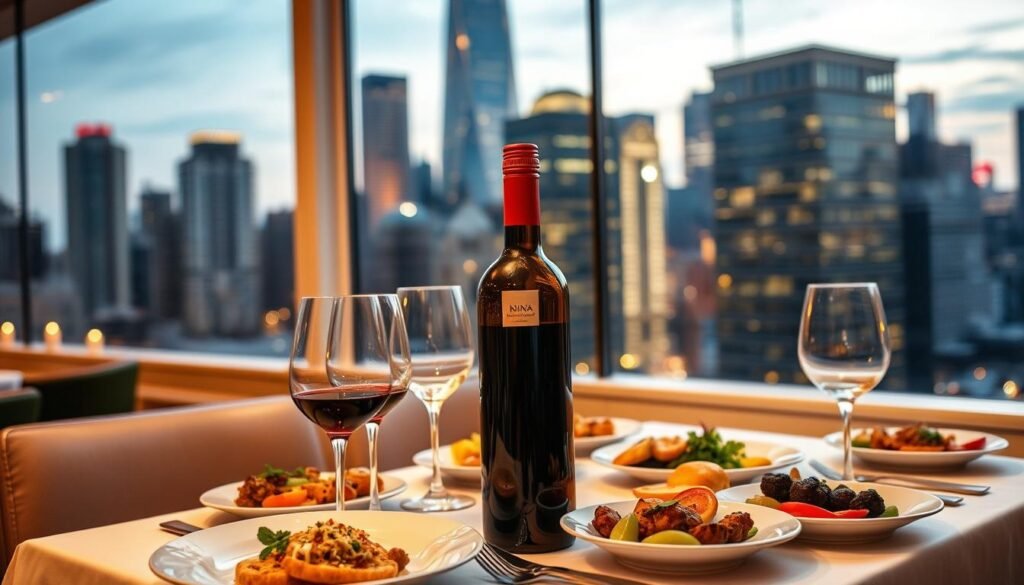
I often plan a day around a table and a view, not just a map. Great meals shape memory, and a well-timed tasting can change how the whole trip feels.
Napa Valley: vineyards, tastings, and sunrise views
In Napa I book tastings with vineyard views and pace the day around a long lunch. I rise early for a hot air balloon ride, then follow with two relaxed wine tastings and a golden-hour stroll through the vines.
Tip: pick a hotel near a tasting route so evenings stay short and simple.
Street eats to fine dining: Tokyo, Paris, Rome, Barcelona
In great food cities I plan food crawls that mix markets and cafés with a single sit-down restaurant each evening. Tokyo’s sushi bars, Parisian patisseries, Roman trattorias, and Barcelona tapas lanes all reward small, deliberate stops.
I book timed reservations and carry a flexible snack so I never miss a table I care about. I also leave room for one unplanned stop — plenty of my favorite finds began as a random alley or market stall.
- I alternate splurge dinners with casual bites to taste more without burning time.
- Wine regions work best slow: two tastings, a long lunch, and a stroll.
- Bring a short list of restaurants ahead and a loose plan for wandering.
Architecture, art, and living history that left me speechless
A single façade can change how you read an entire city; that’s how many of my days begin.
Mughal, Roman, and Gothic icons teach different lessons about craft and power. The Taj Mahal’s symmetry feels like a quiet poem. The Colosseum shows scale and engineering, and Notre Dame’s Gothic lines carry centuries of devotion.
I build each day around one architectural icon so I can linger over details. I read a little context the night before and use timed entries or early starts for more quiet time.
Modern curves and skyline drama
In Barcelona, Gaudí makes the city a living gallery of color and form. Dubai’s skyline — anchored by the Burj Khalifa — is best seen at sunset from a high viewpoint.
- I pair a major site with a small museum or neighborhood for deeper context.
- Slow, focused time reveals the real beauty and history behind each destination.
| Site | Quick tip | Why it matters |
|---|---|---|
| Taj Mahal | Sunrise & reflection pool | Symmetry highlights Mughal art |
| Colosseum | Early entry tour | Scale and engineering history |
| La Sagrada / Burj Khalifa | Late afternoon views | Contrast of organic art and modern ambition |
Choosing the right time to go: seasons, festivals, and weather
Small timing shifts—an hour, a day, or a month—often decide whether a memory feels crowded or quiet. I work backward from seasons: Northern Lights windows, reef clarity, and peak waterfall flow change the whole trip. That choice shapes how many visitors you meet and how a day unfolds.
Northern Lights windows, reef visibility, and waterfall peak flow
I track seasons and a few solid data points. The Blue Lagoon is open year-round, yet aurora chances rise Nov–Feb. Victoria Falls runs highest Feb–May—that’s rainbow season and louder water.
Reef clarity shifts by month; plan snorkeling around calm seas. For waterfalls, aim for peak flow if you want drama, or shoulder months for fewer visitors.
Avoiding crowds at world-famous sites
I pick days and time slots that dodge visitor spikes. Sunrise entries beat 10am buses at national park boardwalks and major monuments. For the Great Wall I often book an early private tour; for the Taj Mahal I never schedule a Friday.
- I reserve one timed entry and one flexible day for weather or closures.
- Shoulder months usually deliver lighter crowds and better prices.
- Split national park time between early morning and late afternoon for calm trails.
- If a tour unlocks early access, I take it; otherwise I DIY and save the fee.
Timing is everything—one hour can mean a quiet sunrise or a packed midday line.
Where I stay: resorts, boutique hotels, and cave hotels I’d book again
My choice of where I sleep shapes how a day unfolds—sometimes more than the itinerary itself. I pick lodgings that add meaning: a balcony sunrise, easy access to a gate, or a nightly soundscape that sticks with you.
From overwater bungalows to rainforest eco-lodges, I balance convenience with character. A resort night in Bora Bora or the Maldives gives a different rhythm than a boutique inn in a historic town.
I lean on names that have earned trust: Marriott Mena House outside Giza, Oberoi Amarvilas near Agra, and Raffles Grand Hotel d’Angkor for easy early starts. For raw nature, explora Patagonia and Finch Bay Galapagos Eco Hotel put me close to trails and wildlife sounds.
How I choose
- I favor a single splurge night at a resort, then smaller hotels for the rest.
- Location matters—near park gates, within walking distance of an old town, or right on an island beach.
- On-site guides or activities are a big plus; they save time and expand my experiences.
Some hotels feel like a second home on the road. When that happens, the stay becomes part of the trip, not just a place to sleep.
Boat days, scenic flights, and unique rides that change your perspective
A single perspective can remake a memory—one aerial sweep or a slow ferry often becomes the day I talk about for years.
How I pick them: I choose one perspective-shifting option per destination. That might be a helicopter over Heart Reef or Victoria Falls, a felucca on the Nile, a classic gondola in Venice, or a coastal ferry along the Amalfi and Greek isles.
Helicopters, gondolas, feluccas, and ferries
Short flights reveal coral patterns and lagoon colors you can’t see from land. A helicopter tour over a reef or a falls gives scale and motion in minutes.
On coastal routes, I treat ferries as a relaxed tour. They turn traffic into a breeze and link small towns and beaches on an easy schedule.
- I schedule these on a flexible day so weather and light stay on my side.
- I pre-book when availability is tight, then build the rest of my plans around that one showstopper.
- I always carry a backup plan for wind or sea changes so the trip stays smooth.
These rides change how I see a destination. The slow crossing, the hush from above, or a gentle glide past cliff faces often becomes the defining moment of an island or coastal trip. The beauty of travel can flip in an instant when you change how you move through places.
Luxury versus budget: how I plan for value and unforgettable experiences
When I trim a budget or stretch a splurge, I aim for moments that actually stick with me long after the trip ends.
My rule is simple: spend where the upgrade changes the experience, save where a DIY day works fine. That keeps a trip rich in moments, not just receipts.
When to splurge on guides, scenic flights, and special-access tours
I splurge when early entry, a private transfer, or a scenic flight unlocks a rare view or saves precious time. Think Great Wall before the buses, a small-group Angkor sunrise, or a helicopter over a reef. Those upgrades reshape the day.
I save on straightforward destinations — city walks, simple island hops, and self-drive loops where logistics are clear. In many countries and cities, a local guide adds cultural context that lingers after you’re back home, so I weigh that value carefully.
- I protect a key booked tour when logistics are complex and skip others.
- I ask: will this upgrade unlock something rare or just add cost?
- I bundle a few big splurges rather than many small ones so the value is obvious.
- I often shift budget toward a night at a memorable place when the stay shapes the trip.
“Aim for upgrades that change what you see, not just how you spend.”
For a practical take on balancing splurges and savings, see my notes on luxury vs budget planning.
Responsible travel today: nature, wildlife, and culture first
Respectful travel means choosing actions that protect nature and honor local culture on every day of a trip. I try to make small moves that add up: lighter footprints, kinder interactions, and safer choices for animals and people.
Low-impact choices, respecting local traditions, and safety basics
I travel light on trails and stay on marked paths. I give wildlife plenty of space and never feed animals.
- Learn local customs: a few phrases and simple manners go a long way with hosts and vendors.
- Choose mindful operators: I book guides who pay fairly, follow safety rules, and support conservation.
- Cut single-use plastics: I refill bottles, carry a packable bag, and avoid disposable cutlery where possible.
- Dial your adventure to conditions: I listen to local advice on weather and terrain before hiking or boating.
- Ask before photos: I respect privacy and sacred moments, especially in sensitive cultural settings.
- Spend locally: I favor family restaurants, independent guides, and community stays where my dollars matter most.
| Focus | Action | Why it matters |
|---|---|---|
| Trails & parks | Stay on paths; pack out waste | Protects habitat and future visitors |
| Cultural respect | Learn customs; ask permission | Builds trust with each country and community |
| Wildlife & operators | Keep distance; book vetted guides | Safer animals and stronger conservation |
Responsible travel today is simple: notice your footprint and choose kindness over convenience.
Conclusion
The common thread across long trips is small choices—an early start, a local guide, a slow meal—that shape how I remember a place and a day.
, Let this guide spark experiences, that you carry for life rather than just photos you scroll once. From world wonders to wild coasts, these places hold the most beauty and the richest stories.
Your visit will change with timing, how you move, and which cities or islands you pair together. Over the years I learned simple planning wins: sunrise starts, smart stays, and a flexible mindset.
Mix beaches with city breaks or pair an island escape with a historic capital. Use early access and scenic routes to save time and add wonder. Choose what speaks to you now, leave room for serendipity, and may every journey feel as beautiful as the destination.


